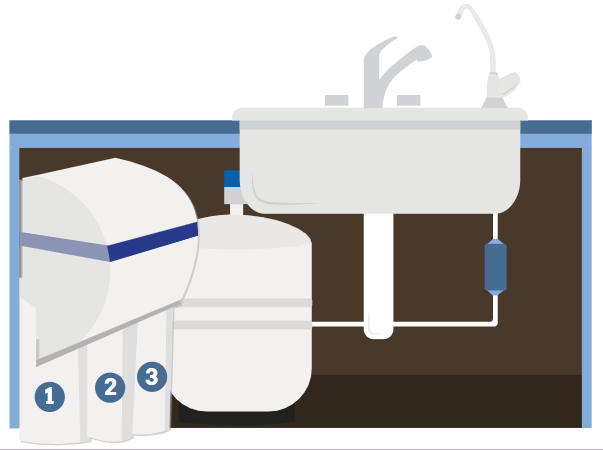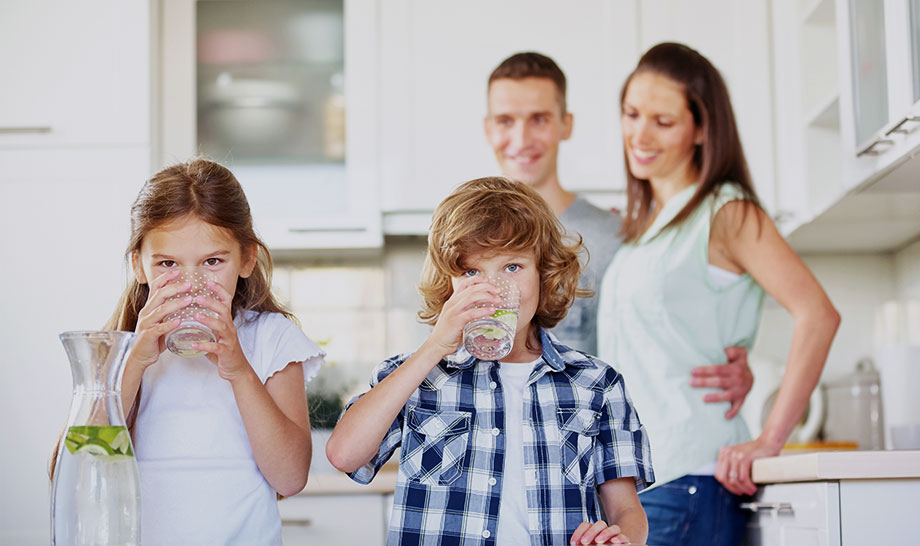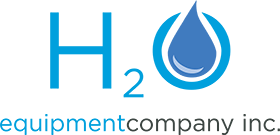
Is Reverse Osmosis water unhealthy? The answer is no.
Reverse Osmosis is a powerful process that removes hundreds of contaminants – some you will never even know about, at a fraction of the cost of bottled water. Reverse Osmosis will treat your tap water at the kitchen sink by forcing water through a series of filters and a membrane – trapping contaminants – and sending them down the drain.
Here are some RO Myth’s and the facts about reverse osmosis water.
MYTH |
FACT |
|---|---|
|
It is unhealthy because it removes all the minerals from my water. |
Yes, it does remove about 99% of the minerals. BUT over 95% of your essential minerals comes from the food you eat NOT your water. Fact: One glass of OJ contains the same amount of minerals in 30 gallons of water. The other flaw in believing that you drink enough water to receive the minerals you need AND that your water HAS those minerals. They may be either too high or too low to begin with. |
|
Reverse Osmosis water is unnatural. |
In fact, it is as close to pure and natural as you can get. Rainwater is second. When your water hits the ground and picks up everything it touches – including numerous man-made contaminants – that is unnatural. |
|
Bottled Water is Better |
Most bottled water IS Reverse Osmosis water including Aquafina and Dasani. Some may add minerals back in. And bottled water is AWFUL for the environment. |
|
RO water leaches minerals from your body |
The EPA and the WQA do not support this statement and further add that RO water has no ill effects on humans. |
|
An RO wastes water |
Does a toilet waste water? An RO system serves a function and during that process it use about 4 gallons to make 1 gallon of treated water. If you run water while you brush your teeth – that equals 4 to 5 gallons of water. THAT is wasteful. But to give you safe water – that is a small trade-off. |
|
RO water has a low pH which is bad for my body |
Typical RO water has a pH of 5-6. Most soft drinks have a pH of 2.5 and coffee around 4. And your body will automatically regulate the pH up to a very specific range of 7.35 and 7.45 units. |
|
An RO requires a lot of maintenance. |
Every year you change the filters – just like you do for your refrigerator filter. Every 3-5 years you change the membrane. Not bad for a system that could literally save your life. |
|
A refrigerator filter does the same thing as an RO |
No. Your refrigerator does have a carbon filter like an RO. But the RO has 3-4 additional filters and a semi-permeable membrane – which is the most important component. |
|
My water softener filters the water – just like an RO. |
A water softener removes hardness, manganese and iron. It does NOT remove any contaminants such as uranium, arsenic, lead. And a water softener ADDs sodium to your water which an RO will also remove. |
|
I wouldn’t be able to tell the difference anyway. |
RO water tastes better – like bottled water but for a fraction of the cost. Plus, your cooking, your coffee and tea will taste better, and your ice-cubes will be crystal clear when the impurities are removed. |
|
It’s too expensive |
Compared to what? Most cost around $1,000. It conveniently provides clear, clean AND safe drinking and cooking water at pennies to the gallon and is much better for the environment than bottled water. |
Reverse Osmosis system gives you certainties that you can NOT get from untreated water. RO will remove a wide range of harmful contaminants – that is a fact. Your water is NOT the primary source of your mineral dietary needs, but it COULD be the primary source of health problems.
The EPA is continuously identifying new man-made contaminants that are polluting our well water systems and we do not even fully understand the effects on our health.
An RO system gives you control over what goes into your body. What could be better than that?
Learn more about drinking water system options here.

